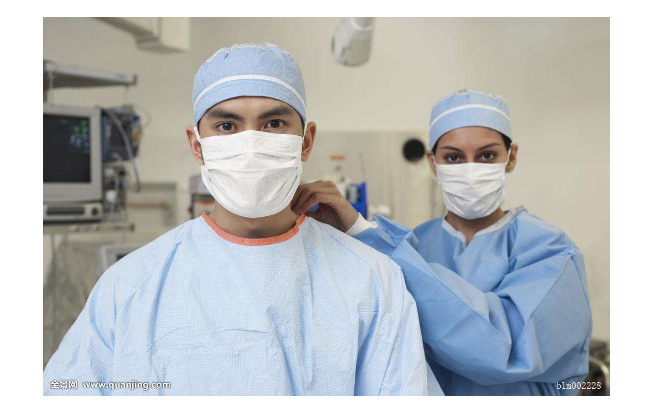摘要
目的
设计鼻内镜手术医护四手操作配合模式流程,解决目前临床鼻内镜手术及护理存在的问题,并探讨其临床中的实际应用效果。
方法:.

本研究分为三个部分进行,第一部分:为基础调查阶段,在文献回顾的基础上,通过临床实践和专家会议法熟悉传统鼻内镜手术配合及患者照护模式,明确传统鼻内镜手术患者护理及手术方式存在的问题,并提出本研究的鼻内镜医护四手操作配合方法和持镜护士角色;第二部分:结合大量临床实践、文献回顾和专家建议,初步建立鼻内镜医护四手操作配合流程,明确术中具体配合项目,培训持镜护士上岗和制定术后个体化护理方案。第三部分:实践和探讨该配合模式的临床应用价值。①采用便利取样的方法,选取2016年3月一8月符合入选条件并知情同意后愿意参加本研究的鼻内窥镜手术患者50例作为研究对象,设计每位患者一侧鼻腔进行传统手术模式,另一侧鼻腔进行医护四手操作配合模式,数据收集采用双盲法,根据患者鼻窦CT和两侧手术时间、出血量来评价两种配合手术效果的差异性;②分别对科室35名医护人员在2015年8月一2016年1月和2016年3月一8月期间分别两次发放《医护合作量表》(NPCS)进行问卷调查,两次问卷全部收回,比较两个时间段的医护合作情况;③与此同时,在以上两个时间段收集在耳鼻咽喉科进行鼻内镜手术的患者各50例,按研究时间先后分为传统组和新型组,分别发放和统计《患者对我科护士优质护理服务满意度调查问卷》,比较两组患者满意度情况,两组患者在年龄、性别和术前症状等基础资料数据方面分别采用t检验、卡方检验(才)和Mann-Whitney U秩和检验,P>0.05,差异无统计学意义。初步用以上指标来评价该配合模式的临床价值。
结果:
第一部分:通过检索近30年相关文献,组织太原市大型综合性三甲医院耳鼻咽喉科6名主任,5名护士长及4名资深护士等15名专家召开专家论证会,明确了传统鼻内镜手术患者护理具有一定的“经验性”和“盲目性”,没有做到精细、连续护理;传统的手术配合方式,即术者“单手操作”,一手持镜,另一手进行夹持、咬切、撕扯等动作,手术难以精细,且长时间对术者造成身体不适引起相关职业病,结合临床经验,提出了医护四手操作的配合,让护士担当持镜角色,具有科学性和实践指导意义。第二部分:初步建立了鼻内镜医护四手操作配合流程,完成了持镜护士的培训,明确了术中具体配合事项,完成了个别病例术后精准护理的制定。第三部分:以山西医科大学第一医院耳鼻咽喉科为试行科室,初步评价该配合模式的临床应用效果。数据分析显示,传统“单手操作”的平均时间为39.3min,医护四手操作平均时间为3 0. 6min,医护四手操作比“单手操作”手术时间缩短了21%,两独立样本均数t检验,统计量t=2.096, p=0.039<0.05,差异具有统计学意义;线性相关分析显示,两侧手术时间具有线性相关趋势,且医护四手操作配合一侧时间少于单手操作一侧时间,对手术时间的影响更小,配合效果更加稳定;医护四手操作一侧手术出血量C 102.98士12.856 ) ml相对单手操作一侧(143.86士15.013 ) ml显着减少(t=14.625,p<0.001),差异具有统计学意义;实施医护四手操作之后科室医护合作和患者满意度为(89.76士3.450)分、C 90.04士3.47)分相比实施之前科室医护合作和患者满意度C 76.76士4. 627)分、C 86.42士2.771分显着提高,两组比较差异具有统计学意义C t'=一15.927、一5.759, p<0.001、p<0.001)。
结论:
1.传统鼻内镜手术配合及患者护理方面存在一定的不足,并提出了鼻内镜手术医护四手操作配合。
2.设计建立的鼻内镜医护四手操作配合模型,包括了对持镜护士的培训,涵盖了持镜护士在鼻内镜手术围手术期工作的全部内容,明确了具体工作细节。
3.新型配合模式与传统手术模式“单手操作”相比,在手术效果、医护合作以及患者护理方面得到了显着提高,但还需在临床实践中进一步完善。
关键词:医护四手操作;鼻内镜手术;单手操作;精准护理;持镜护士。
Abstract.
ObjectiveDesigning the Four-hands Technique model of doctor-nurse collaboration inendoscopic sinus surgery to solve the problems of clinical operation and nursing and toexplore the clinical application effect.
Methods:
This research was performed in three consecutive phases. The first phase: stagebasic research, based on literature review, clinical practice and expert meeting methodare familiar with endoscopic patient care and cooperation mode during operation. Theresome problems in the nursing of patients with traditional EES and surgical methods andput forward the Four-hands Technique of doctor-nurse collaboration and the endoscopicholder for nurse. In the second phase:With a large number of clinical practices, literaturereference and expert advises,preliminary establish the Four-hands Technique of doctor-nurse technological process and make clearly specific cooperation projects. Training forthe endoscopic holder and make the individualized nursing plan. In the third phase:
Practice and Explore the clinical value of the model.①Convenient sampling method wasinclusionaugust mthanused to select 50 cases of patients with nasal endoscopic surgery who meetcriteria and agreed to participate in this stu街in the period between march2016. Designing one side of the nasal cavity of patients with traditional surgery mode, theother side of the nasal cavity to carry out the four hand operation mode.Double blindmethod was used in data collection .According to the patient's nasal sinus CT andoperation time on both sides to compare the superiority of new cooperation model;yif②Conducting a questionnaire survey to comparing the medical and nurse cooperationselecting 35 medical staffs to fill in the NPCS in Before and after the implementationFour-hands Technique of doctor-nurse collaboration.③At the same time, we selected the50 cases of patients in each period in Department of Otolaryngology and fill in thequestionnaire of satisfaction degree of patients. According to the research time, they weredivided intotraditional group and the new group. There was no significant differencebetween thegroups in terms of age, gender and preoperative symptoms by T test andChi square(P>0.05)。Preliminary evaluate the clinical value of this new combinedmode with the above indexes.
Results:
The first phase: By searching the relevant literature of the past 30 years,organizingthe 6directors,5 head nurses and 4 senior nurses experts in departmentofOtorhinolaryngology of large comprehensive hospitals of Taiyuan to hold the expertmeeting. It is clearly that the traditional EES patients experienced a certain degree of“experience” and “blindness”, did not achieve accurate nursing; Traditional surgicalcooperation, namely “one-hand technique”, one hand hold the endoscopic and only theother singel hand complete the holding, cutting, tearing and other movements, it isdifficult to precise. What's more, with the passage of time this will cause discomfort to thebody and give rise to the occupational diseases. Combined with clinical experience, thispaper puts forward the cooperation of the four-hands operation of doctor-nurse, whichmakes the nurse play the role of holding endoscopic, which has scientific and practicalsignificance. In the second phase: we have established the Four-hands Technique ofdoctor-nurse technological process, completed the training for endoscopic holder, Clearedthe specific cooperation in the operation and completed the postoperative precise nursingcare for individual cases. In the third phase:The first hospital of Shanxi MedicalUniversity otolaryngology head and neck surgery as the trial department, Preliminaryevaluate the clinical value of the model. Data analysis shows that the average time of thetraditional “one-hand operation” is 39.3min, the four-hands operation medical care is31.Omin, thetimetheis reduced by 21%. Two independent samples t test, t=2.096p=0.039<0.05,difference was statistically significant.Linear regression analysisshowed that both the operation time with linear correlation and four-hands operation timeis less than a single hand time. Bleeding volume (t=14.625, p<0.001) of Four-handstecnique side relative to the single hand tecnique side was significantly reduced. After theimplementation of four-hands operation of doctor and nurse, medical cooperation and thesatisfaction of the patients (89.76+3.450) points, (90.04+3.47) points compared to thebefore (76.76+4.627) points, (86.42+2.771) points was significantly increased, withsignificant differences between the two groups (t'=一15.927一5.759, p<0.001,p<0.001)Conclusion:
1 .There are some shortcomings and defects in traditional EES cooperation andpatients care and put forward the Four-hands Technique of doctor-nurse collaboration.
2. Design the Four-hands Technique model of doctor-nurse collaboration, includingthe training of the nurses for endoscopic holder, covering the full work of the mirror nursesin the perioperative period of endoscopic surgery.
3. Compared with the traditional operation mode of “one hand operation”, the newmode of cooperation has been significantly improved in the surgical effect, medicalcooperation and patient care. However, it needs further improvement in clinical practice.
Key words:Four-hands Technique of doctor-nurse; EES; One-hand operation; precisionnursing; nurse for endoscopic holder
目 录
中文摘要
英文摘要
常用缩写词中英文对照表
前言
第一部分鼻内镜手术医护四手操作配合提出及意义
1鼻内镜外科发展历史
2统鼻内镜手术模式及其护理不足之处
3鼻内镜医护四手操作的提出依据
4鼻内镜手术医护四手操作配合模式意义
5医护四手操作配合的提出与初步建立研究方法
6本部分小结
第二部分鼻内镜手术医护四手操作模式的建立
1材料与方法
1.1研究目的
1.2研究方法
2结果
2.1专家会议讨论资料
2.2会议专家情况
2.3初步建立鼻内镜手术医护四手操作配合流程
3讨论
3.1研究结果的科学性和可靠性
3.2鼻内镜医护四手操作配合中持镜角色分析
4结论
第三部分鼻内镜手术医护四手操作配合的实践与评价。
1.材料与方法
1.1研究目的
1.2研究方法
1.2.1研究对象·
1.2.2样本量的计算及抽样分组方法
1.2.3干预方法
1.2.4测量指标和工具
1.2.5资料的收集·
1.2.6质量控制·
1.2.7统计学分析·
1.2.8伦理原则·
2结果
2.1研究对象基础资料
2.2双侧鼻腔手术时间的分析
2.3双侧鼻腔手术出血量的比较
2.4传统与新型医护合作情况的对比
2.5科室鼻内镜手术患者满意度调查分析
3讨论
3.1医护四手操作配合提高了手术质量和效率
3.2医护四手操作配合加强了医护之间的合作
3.3医护四手操作配合满足了患者需求,提高了照护质量。
3.4医护四手操作配合模式具有潜在的经济效益
3.5医护四手操作配合模式应用前景
4结论
结论与建议
参考文献
综述
附录
致谢
个人简介
随着鼻内镜手术的不断扩大和治疗普及,鼻内镜外科医生的长期损害将不断积累,从而大大缩短了鼻内镜外科医生的职业时间。...
通过医护“四手操作”更能了解患者的手术治疗过程,更能完全清楚病变部位、病变程度以及对组织的切除情况,术后可以给鼻内镜手术患者提供规范化、个体化治疗康复方案,与传统患者护理相比,以亲身实践为证据,更具有针对性和科学性。...
在文献回顾的基础上,通过专家会议法讨论,最终建立鼻内镜手术医护四手操作工作流程以及明确了具体事项。...
本部分主要介绍初步建立鼻内镜医护四手操作配合详细流程,涵盖了对持镜护士的培训,同时也明确了持镜护士的工作范围与具体事项。...
,由于其基础科学发展的限制和成本高昂,普通的医疗机构无法提供其所需的技术和后勤保障[28],并且在手术的过程中医生需要不断放下手术器械去调整鼻内镜的位姿以达到目标视野进行手术,不方便操作。...
本研究基于文献回顾和集体专家会议讨论的基础上,从鼻内镜手术配合、患者护理等方面初步建立了适用于现在鼻内镜手术及护理的手术配合模式,即医护四手操作,培养了专科鼻内镜手术持镜护士,具有一定的创新性。...
在现代技术和设备不断发展的前提下,传统的单手操作显得有些不足以应对未来的手术,而通过两名术者进行鼻腔的四手操作在不断地成为可能。...